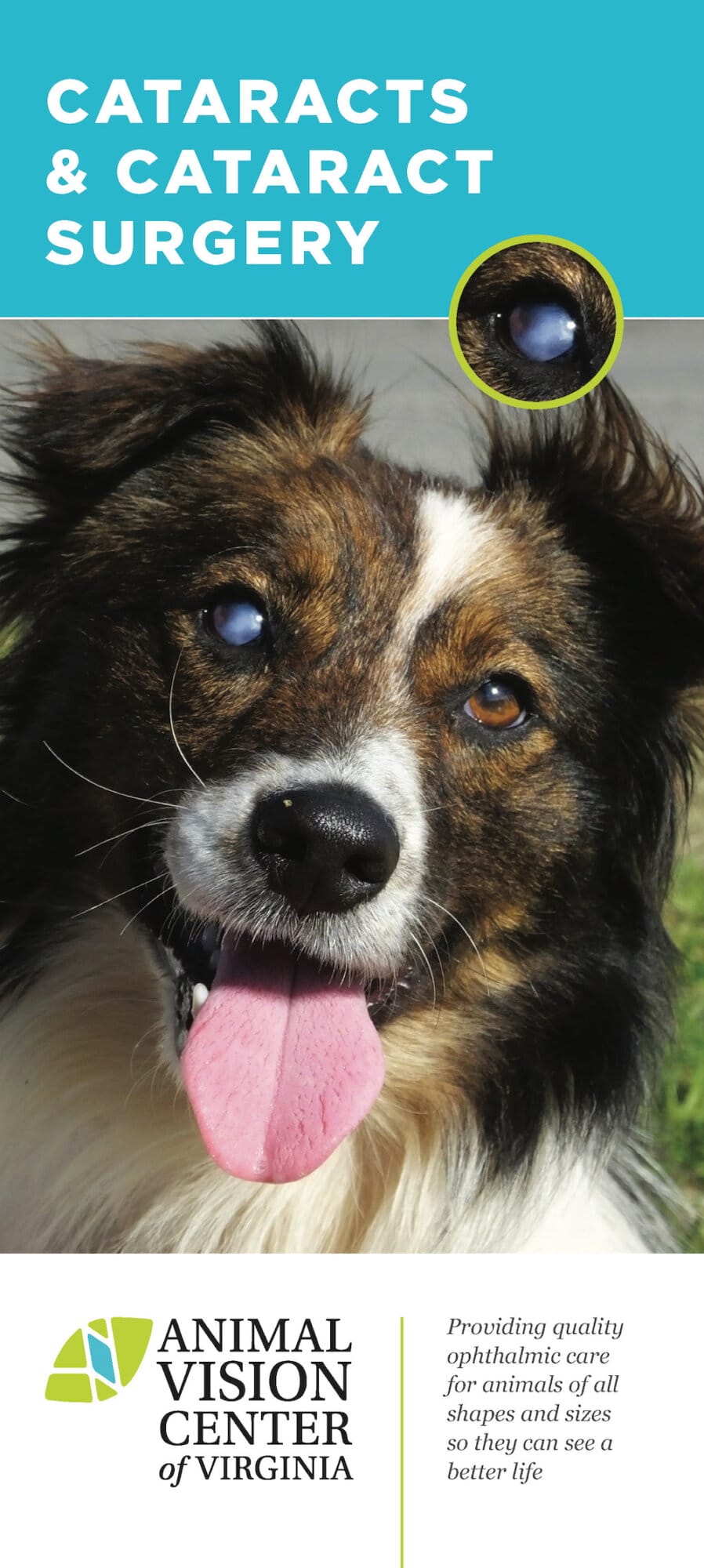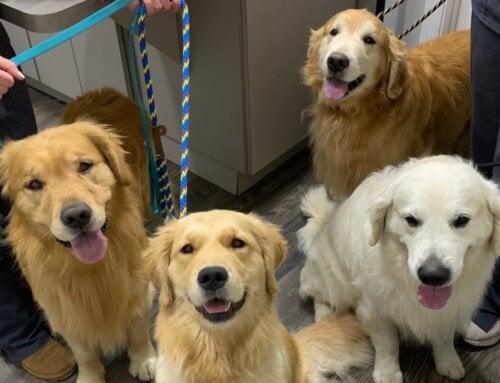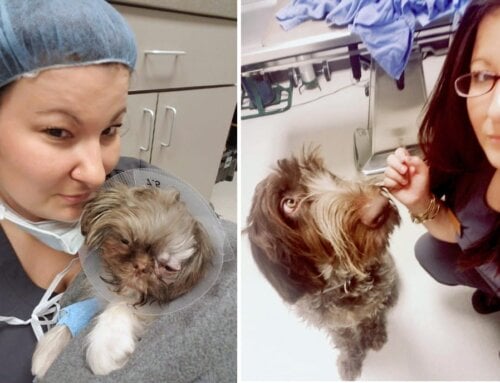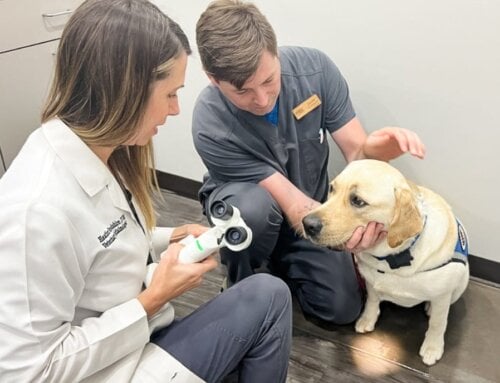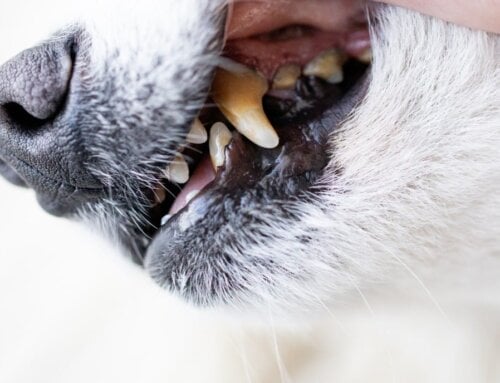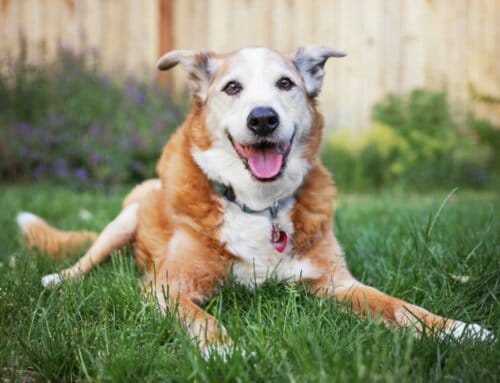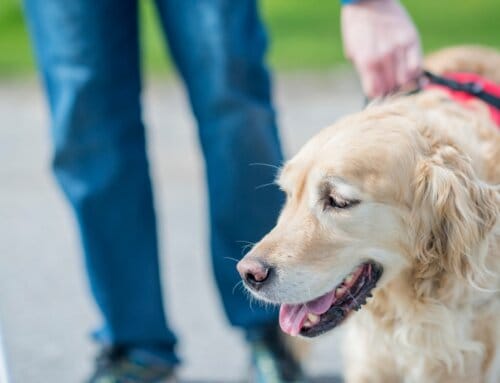In the summer and fall of 2019, Donna Colby noticed changes in her dog Brady’s eyes. They had a cloudy appearance, along with redness, irritation (rubbing) and a clear discharge. Donna told us her pet was also demonstrating concerning behaviors including clumsiness that led to several falls, failure to clear the curbs on his daily walks, and reluctance to walk up and down the stairs in their home.
“My husband and I realized that Brady’s vision problems were not just a normal part of aging that we had to accept, rather a safety issue that we needed to address,” Donna explained.
Brady’s symptoms are common signs of cataracts, a leading cause of vision impairment in animals. An opacity or cloudiness that develops within the lens of the eye, cataracts result in cloudy or blurred vision, and up to complete loss of vision. The only true form of treatment is to remove the cataract with surgery, which carries a high success rate. Greater than 90 percent of cases result in improved vision.
Following a comprehensive exam and a consultation at our practice, we determined that Brady was a good candidate for this procedure. Since his surgery in November, Brady has made a full recovery.
“He is living his best life!” said Donna, who noted her pet is again playful, confident, climbing the stairs, hopping up on the couch, and has resumed his “squirrel patrol” duties in the backyard. “Thank you to Dr. Brookshire and her staff for giving our Brady his quality of life back. It gives us peace of mind knowing he is able to safely navigate his world. He’s seeing 20/20 in 2020!”
Read more about this ocular condition in our “Cataracts & Cataract Surgery” brochure. If you have a pet, or a patient, that is exhibiting signs of cataracts, please call us at 757-749-4838 to discuss treatment options. We’re here to help.

